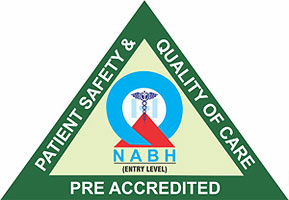+91-7291089674 (Bandra)
+91-7291092120 (Kandivali)




June 3, 2022 | Author: Admin
Overview
Dry eye is also known as tear film dysfunction. It occurs when the tear film of the eyes breaks down. The tear film is the outer coating on the surface of the eyes. It provides moisture to the eyes and protects them from infection.
Tears consist of three layers which play a critical role in eye functioning
What is dry eye disease?
Dry eye is a chronic and uncomfortable condition. In this condition, the eyes are not able to produce an adequate quantity of tears or the quality of tears are poor.
Types of dry eye disease
Dry eye disease can be of two types. It is very rare for a patient to suffer from both types of disease at the same time.
Meibomian glands are present in the eyelids, which produce lipid or oily part of the tears. Inflammation in the meibomian gland causes inadequate production of meibum. In the absence of lipid, the tear film breaks down due to evaporation of the underlying aqueous layer.
Insufficient production of the watery part of tears by lacrimal glands can cause aqueous tear-deficient dry eye.
Hence dry eye can occur due to inadequate production of tears or adequate production but higher evaporation of the tear film.
Symptoms of dry eyes
Dry eye occurs when the tear film is not healthy. As result, your eyes become irritated. In response to irritation, the eyes produce excessive tears. This is called reflex tearing. Your eyes may produce tears as a response to the ocular irritation, but these tears are of poor quality and they do not lubricate the ocular surface. Hence dry eye can also present as watering.
The symptoms of dry eye can vary. The most common symptoms of dryness include
Various options for getting relief from dry eyes in summer
Dry eye most commonly occurs in summer due to excessive evaporation of tear film. The use of air conditioners in homes, workplaces or car also contributes to the quick evaporation of tears. Sun, dust, environmental pollution and smoking are also the causative factors for dry eye. You can protect your eyes in the following ways.
When to see an ophthalmologist
Consult your ophthalmologist, if you feel redness, pain, irritation, or any of the above symptoms for a long time. Your eye specialist may prescribe you various medications, like lubricating eye drops, that may help in relieving the symptoms of dry eye. Further, the doctor may also advise certain tips to avoid the recurrence of dry eyes.
Dry eye treatment
Over-the-counter eye drops or artificial tears are very helpful in treating mild to moderate dry eye and computer vision syndrome but they will not sufficient for severe and persistent symptoms. For serious symptoms of dry eye, other efficient options are available.
Conclusion
Dry eye is not a serious problem. Use of lubricating eye drops and home remedies will help in dry eye. You can also manage this condition through nutritional supplements. Take advise from your ophthalmologist for managing the symptoms of dry eyes.